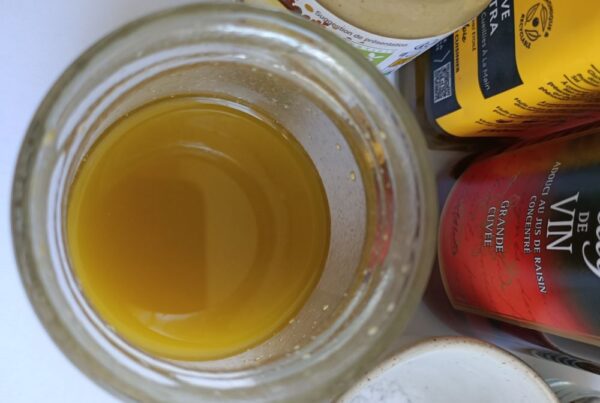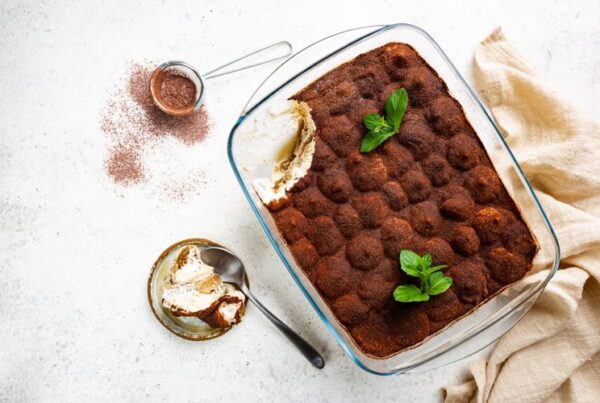In this article, you will learn what red wine vinegar is, what it tastes like and how to use it.
You will also learn the best alternatives to red wine vinegar.

Contents
What is red wine vinegar?
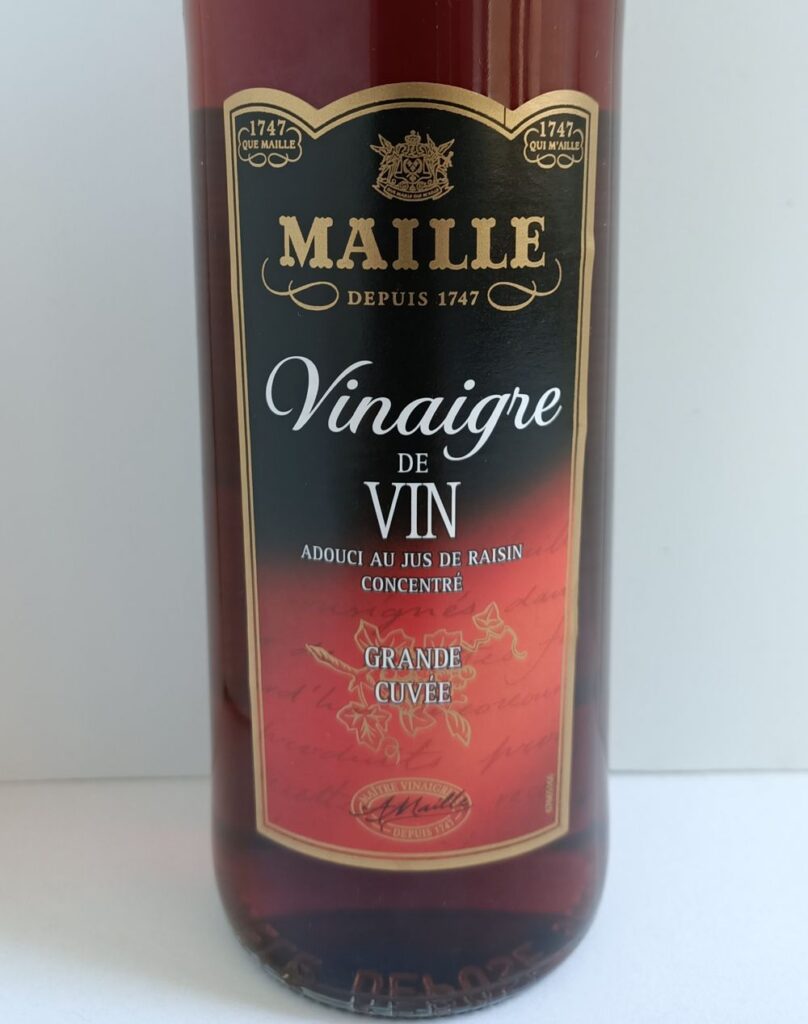
Red wine vinegar is a tangy, acidic liquid made from the fermentation of red wine.
It is less acidic and has more flavor than regular malt vinegar.
The color of red wine vinegar ranges from pale pink to deep red, depending on the type of red wine used in its production.
It is suited to hearty flavors like beef, game & pork, as well as rich sauces.
How is red wine vinegar made?
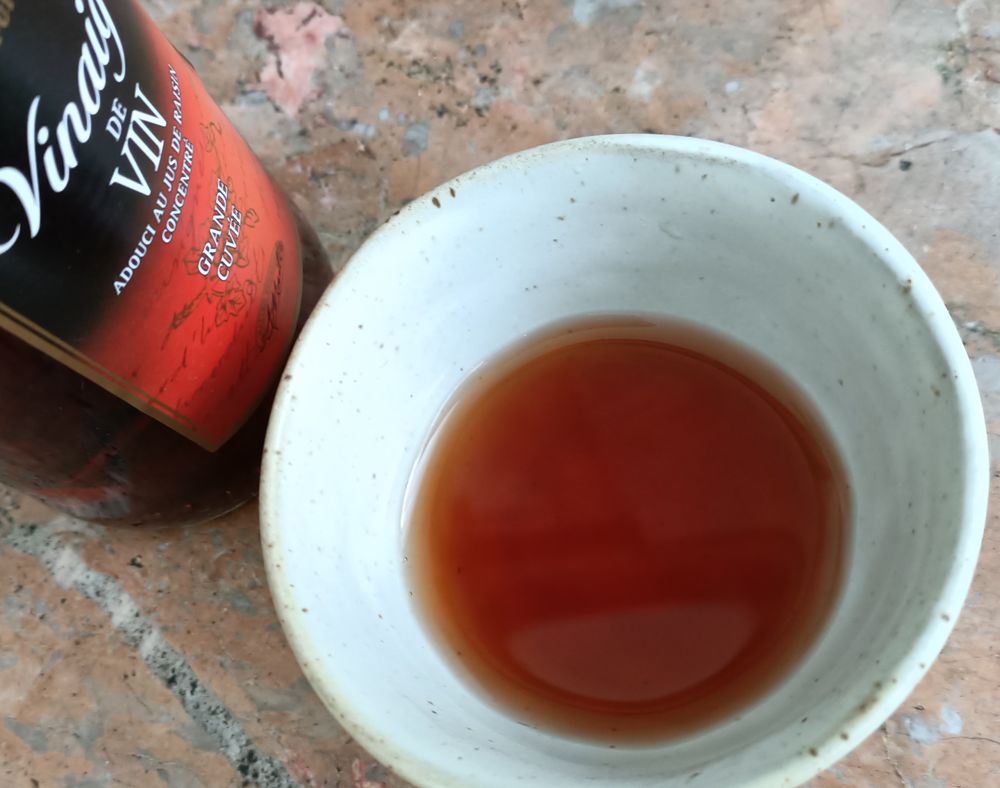
Red wine vinegar is made by fermenting red wine. The fermentation process transforms the alcohol into acetic acid which gives vinegar its sour taste.
The longer vinegar ferments, the more complex and developed its flavor becomes.
Some red wine vinegars are aged in wooden barrels for several months or even years, which enhances their taste and aroma.
The aging process also affects the vinegar’s color, giving it a richer hue.
Uses of red wine vinegar in cooking
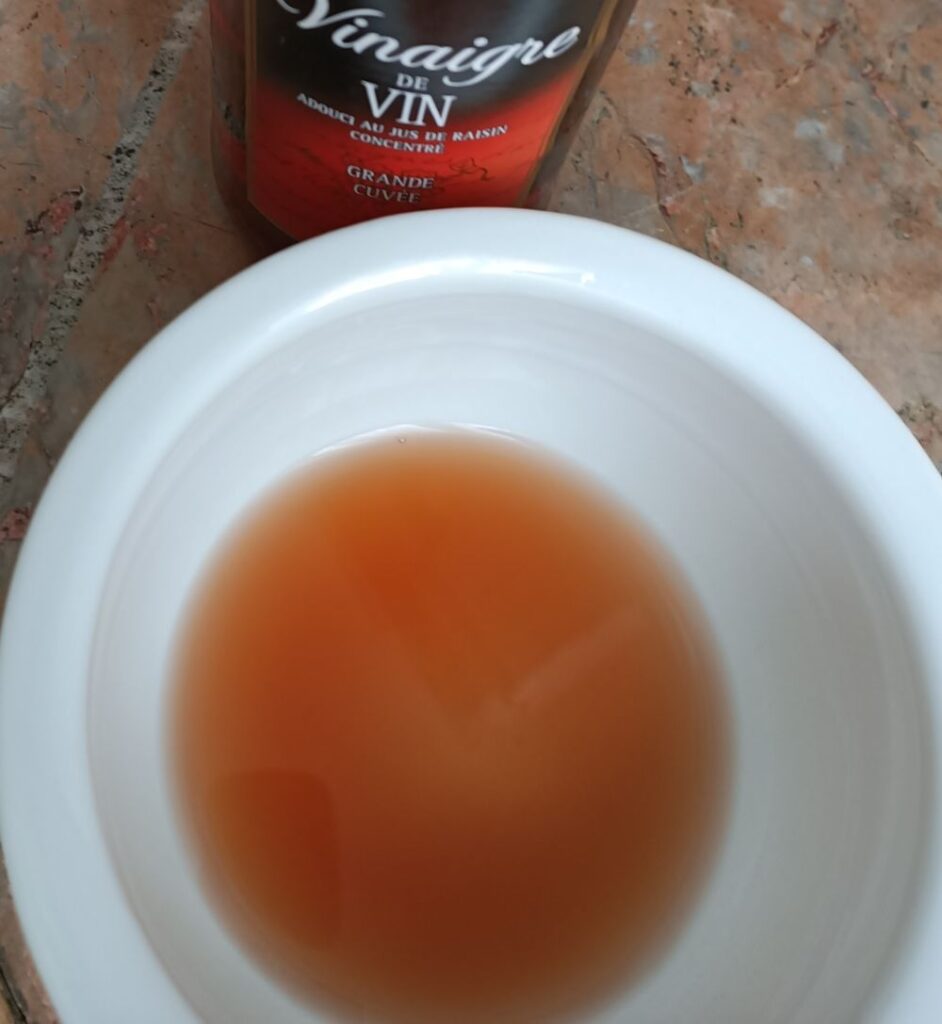
Red wine vinegar is a versatile ingredient to have in the kitchen. It can be used to enhance the flavor of a variety of dishes, from simple salads to hearty stews. I mostly use it to make vinigrettes and to splash on fries, but the possibilities are endless!
Here are some common ways to use red wine vinegar:
- Salad dressings: Combine red wine vinegar with olive oil, salt and pepper to create a classic vinaigrette. It adds a bright, tangy flavor that balances the richness of oils and fats in dressings.
- Marinades: Use red wine vinegar as the base for marinades to tenderize meats, chicken, or fish. The acidity breaks down proteins, making them more tender.
- Sauces: Add red wine vinegar to sauces, such as BBQ sauce or tomato-based sauces, to bring a sharp, acidic note that enhances other flavors.
- Pickling: Red wine vinegar is great for pickling vegetables like onions, cucumbers, and beets. Its acidity preserves the vegetables while adding a delicious tartness.
- Soups and stews: A splash of red wine vinegar can brighten up the flavor of soups and stews cutting through the richness of the ingredients.
Red wine vinegar vs. other vinegars

Red wine vinegar stands out from other types of vinegar due to its color and rich flavor.
Here’s how it compares to some popular varieties:
- White wine vinegar: It ranges from clear to lemon or golden in color. It is milder and less intense than red wine vinegar. White wine vinegar is is best for salads, chicken and fish dishes or light sauces.
- Apple cider vinegar: Apple cider vinegar has a fruitier, slightly sweeter taste than red wine vinegar. It’s often used for health purposes, as well as in salads and marinades.
- Balsamic vinegar: Balsamic vinegar is a dark in color. It is sweeter and thicker than red wine vinegar, with a syrupy consistency. It’s ideal for drizzling over roasted vegetables or salads.
- Rice vinegar: Rice vinegar is light in color and it is the mildest of all vinegars, with a slightly sweet flavor. It’s commonly used in Asian cuisine, particularly for sushi and stir-fries.
- Distilled white vinegar: This vinegar is sharp and very acidic, often used for cleaning or pickling rather than cooking due to its intense flavor.
How to store red wine vinegar properly
Store red wine vinegar in a cool, dark place, such as a pantry or cupboard, to maintain its quality.
Exposure to light and heat can affect its flavor and cause it to deteriorate over time.
Make sure the bottle is tightly sealed after each use to prevent air from entering, which could spoil the vinegar.
While red wine vinegar doesn’t technically expire, it can lose its flavor and aroma if not stored properly.
Over time, sediment may form in the bottle, but this doesn’t mean the vinegar has gone bad—it’s a natural occurrence and doesn’t affect the safety of the vinegar.
For best results, use red wine vinegar within two to three years of opening to enjoy its optimal flavor.
Substitutes for red wine vinegar

If you run out of red wine vinegar, there are several substitutes that can work in a pinch, although the flavor will vary slightly:
- White wine vinegar: The closest substitute, white wine vinegar has a similar acidity but is milder in flavor.
- Apple cider vinegar: With its fruity taste, apple cider vinegar can replace red wine vinegar in most recipes, though it may add a slightly different flavor.
- Balsamic vinegar: For a sweeter, more complex flavor, use balsamic vinegar. However, it may change the overall color and taste of the dish.
- Sherry vinegar: Richer and nuttier, sherry vinegar works well as a substitute for red wine vinegar in marinades and sauces.
- Lemon or lime Juice: Citrus juice can provide the acidity needed in place of red wine vinegar, but it lacks the same depth of flavor.
How long does red wine vinegar Last?
Red wine vinegar has a long shelf life due to its high acidity, which acts as a natural preservative.
When stored properly, it can last for years without spoiling.
Even after opening, red wine vinegar remains safe to use for up to 5 years, though its flavor may slowly diminish over time.
To determine if red wine vinegar is still good, smell and taste it.
If it has a strong, unpleasant odor or an off taste, it may have gone bad.
Sediment or cloudiness is normal and doesn’t affect its safety or flavor.
For best results, store your vinegar in a cool, dark place, tightly sealed, and away from heat or direct sunlight.
Choosing the best red wine vinegar for your recipes
When choosing a red wine vinegar, look for one made from quality red wine and without additives or preservatives.
Higher-quality vinegars are often aged longer, resulting in a more complex flavor.
Some brands may even specify the type of red wine used, such as Merlot or Cabernet, which can slightly affect the flavor profile.
For everyday cooking, a standard red wine vinegar works well, but if you’re looking to elevate a dish, opt for an aged vinegar.

Read with confidence: I am a certified wine expert (WSET L3).


